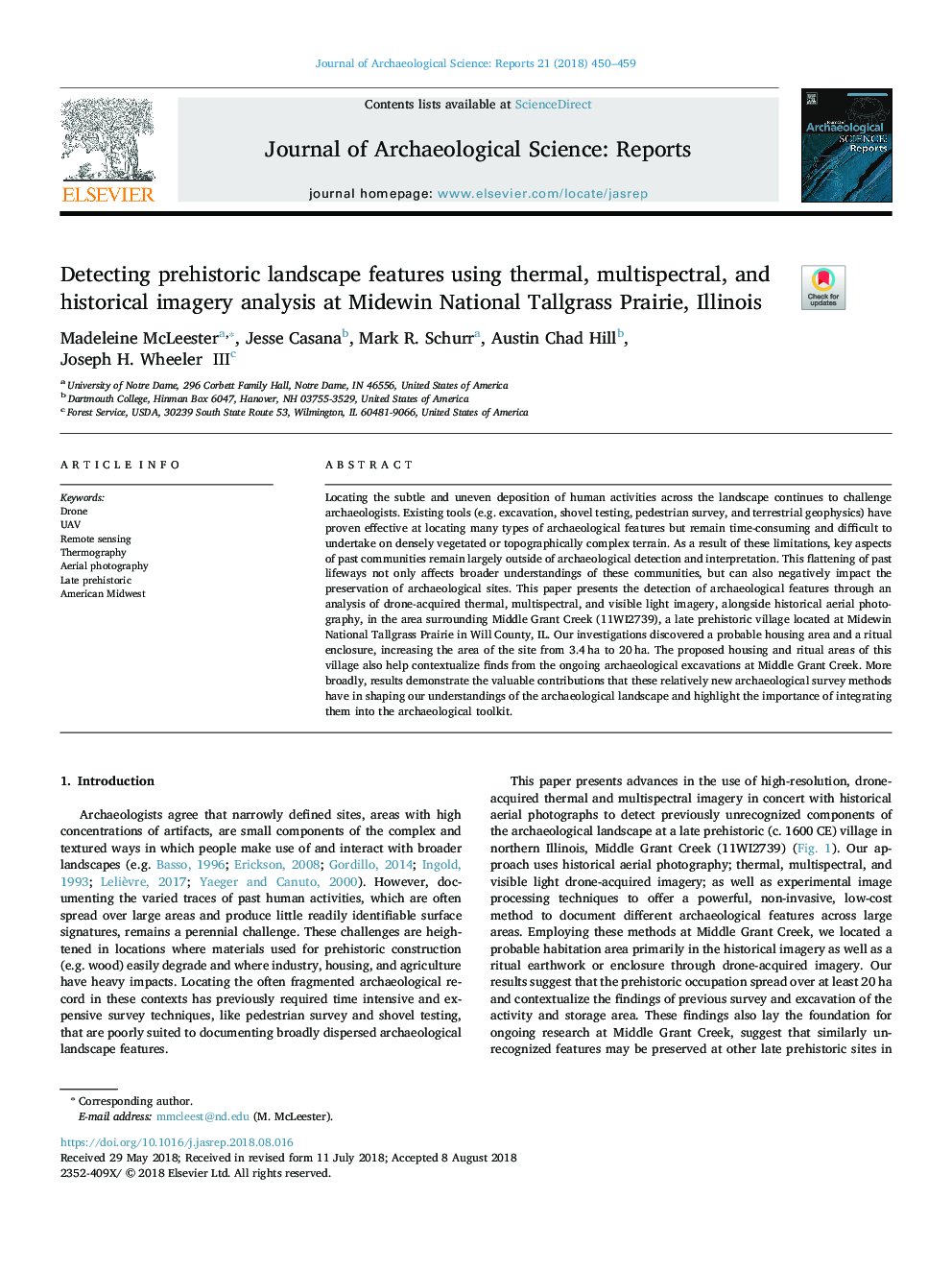| Article ID | Journal | Published Year | Pages | File Type |
|---|---|---|---|---|
| 7444192 | Journal of Archaeological Science: Reports | 2018 | 10 Pages |
Abstract
Locating the subtle and uneven deposition of human activities across the landscape continues to challenge archaeologists. Existing tools (e.g. excavation, shovel testing, pedestrian survey, and terrestrial geophysics) have proven effective at locating many types of archaeological features but remain time-consuming and difficult to undertake on densely vegetated or topographically complex terrain. As a result of these limitations, key aspects of past communities remain largely outside of archaeological detection and interpretation. This flattening of past lifeways not only affects broader understandings of these communities, but can also negatively impact the preservation of archaeological sites. This paper presents the detection of archaeological features through an analysis of drone-acquired thermal, multispectral, and visible light imagery, alongside historical aerial photography, in the area surrounding Middle Grant Creek (11WI2739), a late prehistoric village located at Midewin National Tallgrass Prairie in Will County, IL. Our investigations discovered a probable housing area and a ritual enclosure, increasing the area of the site from 3.4â¯ha to 20â¯ha. The proposed housing and ritual areas of this village also help contextualize finds from the ongoing archaeological excavations at Middle Grant Creek. More broadly, results demonstrate the valuable contributions that these relatively new archaeological survey methods have in shaping our understandings of the archaeological landscape and highlight the importance of integrating them into the archaeological toolkit.
Related Topics
Social Sciences and Humanities
Arts and Humanities
History
Authors
Madeleine McLeester, Jesse Casana, Mark R. Schurr, Austin Chad Hill, Joseph H. III,
